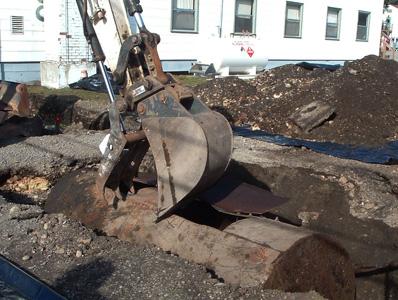Project Background
The Fort Lewis U.S. Army Post is an 86,000-acre military reservation established in 1916 near Steilacoom in Pierce County, Washington. Fort Lewis is the home of I Corps, one of 15 U.S. power projection platforms, and employs more than 25,000 soldiers and civilian workers. Facilities at Fort Lewis include an airfield, extensive barracks and other living quarters, a hospital complex, and facilities used for training, logistics support, and storage.
Many of the barracks, mess halls, administrative buildings, and additional support facilities currently in use at Fort Lewis were constructed during World War II. Aging heating oil, diesel fuel, and gasoline tanks in these locations are being replaced as part of an ongoing program by the military to bring storage tanks into compliance with current regulations.
Scope of Work
Oversight responsibilities fulfilled by Farallon for this widespread project included preparing comprehensive Closure and Replacement Management Plans to guide the tank decommissioning work. The plans were produced within stringent technical specifications and under tight deadlines. Subsurface sampling and analysis conducted at Fort Lewis generated petroleum hydrocarbon and associated contaminant data to serve as the basis for documenting the decommissioning activities and conclusions about the environmental conditions at each of the 150-plus tank locations.
The presence of structures and underground utilities proximate to some of the tanks precluded removal of petroleum-contaminated soil to levels sufficient to attain MTCA cleanup levels. In these instances, a risk-based evaluation of residual contaminants, human health risks, and contaminant exposure pathways was conducted using data collected from the subsurface investigation, in accordance with Ecology Toxics Cleanup Program requirements.
Additional Environmental Dimension
An added environmental element to the project was the military’s requirement that a minimum of 75 percent of waste materials generated be diverted for recycling or reuse. Prior to and during closure activities, Farallon supported project team colleagues in the removal of materials identified for reuse or recycling to ensure that this goal would be met. Materials generated during tank closure activities that could not be reused or recycled were disposed of at an authorized waste management facility. To reduce the amount of material going to area landfills, excavated soil with concentrations of diesel- and oil-range petroleum hydrocarbons between 1,500 and 6,000 milligrams per kilogram was diverted to theSequalitchew Creek Eco-Park at Fort Lewis for bioremediation and subsequent reuse at the cantonment.
Future Involvement
Farallon remains engaged in management plan development, environmental assessment, project documentation, and closure reporting services at Fort Lewis as the military extends its program to upgrade facilities and infrastructure at this army post. These activities include building demolition and removal, hazardous building materials abatement, and assessment and closure of USTs, ASTs, oil-water separators, vehicle maintenance pits, and other ancillary building features.

